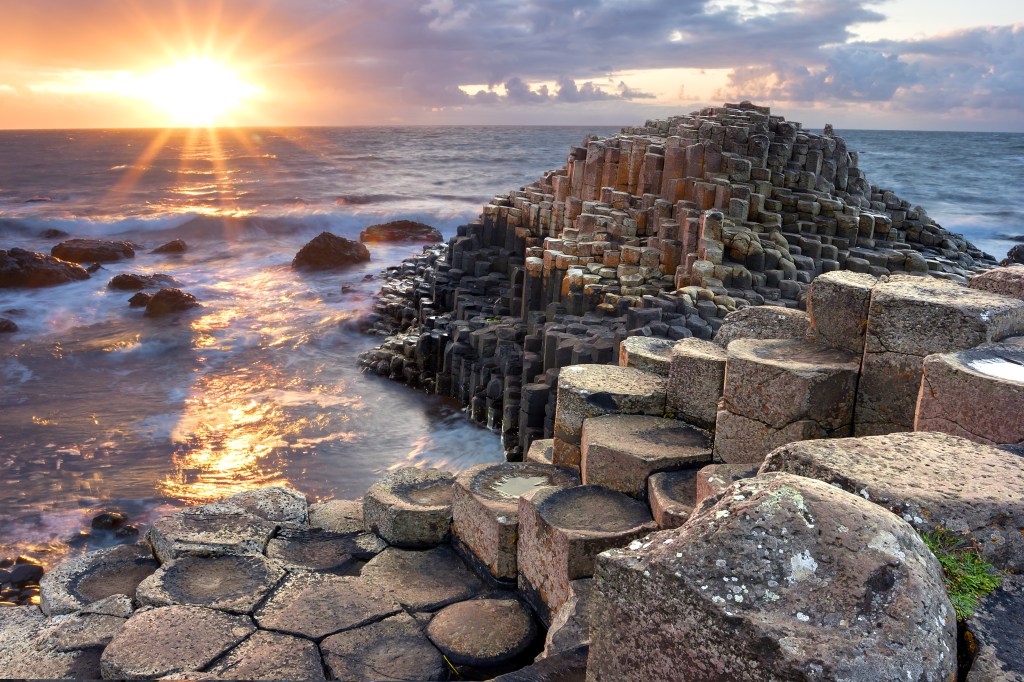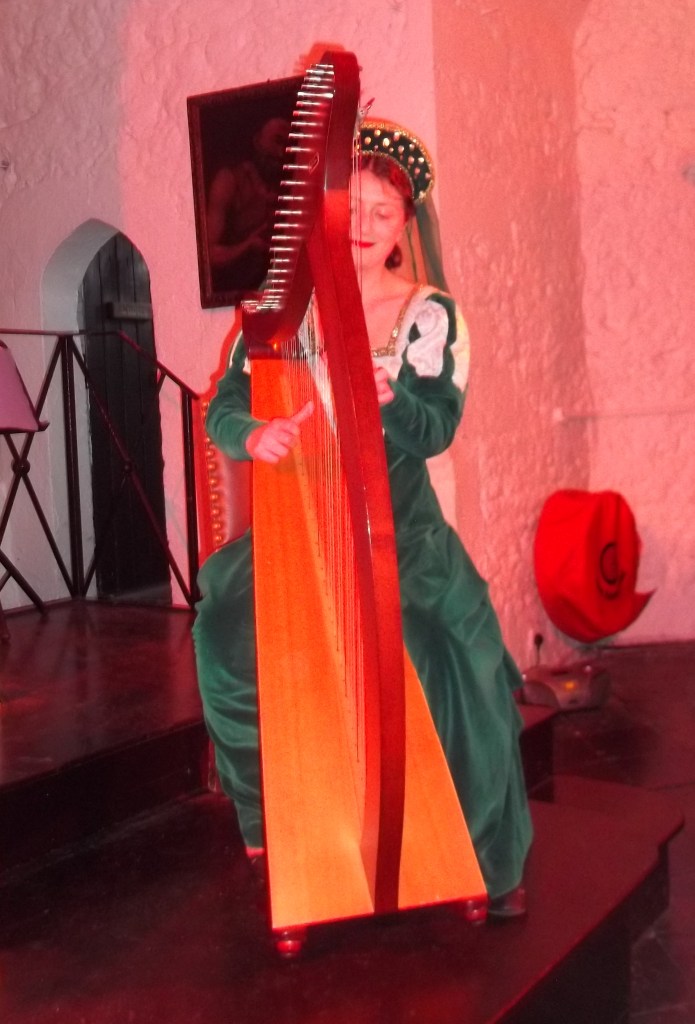
What is it about the horror genre that gives us both shivers and thrills? I’m not talking about the excessively gory kind of horror, though that has a place and a fandom. Instead, I mean the more pop-culture renditions (sorry not sorry) of horror beasties and things that go bump in the night. Zombies are a big thing on TV, in the movies, and in books right now. So are vampires and werewolves. Anything creepy that humans can turn into, really.
Let’s take a look at these creatures and their evolution.
Here Come the Zombies
Zombies are a staple of modern horror. The Walking Dead, Fear the Walking Dead, and more have brought zombies out of George Romero movies and into the mainstream. My favorite version of the zombie pandemic is Feed and its sequels by Mira Grant (aka Seanan McGuire). It rises above the body (sorry not sorry) of the typical shambling, brains-eating stereotype by being caused by a literal pandemic, despite the fact that it came out in 2010, back when few of us feared a pandemic, zombie or otherwise. It also adds meaning and interest because it addresses other pertinent topics such as media, conspiracies, and politics.
(Seanan-Mira has also plumbed the depths (sorry not sorry) of horror by writing a novel, Into the Drowning Deep, about killer mermaids, which is a lot more horrifying than that description makes it sound. But I digress.)
Bite This!
Vampires seem passe now. They’ve been done to death (sorry not sorry). The craze, I think, really took off in 1976 with Anne Rice’s novel Interview with the Vampire, which later became a movie (now remade, I understand) and a TV series. I personally thought the novel was overwritten and too long, but that didn’t stop it from becoming a runaway bestseller. More recent but still old (from 1997) was Buffy the Vampire Slayer, still my favorite of the vampire-themed media sensations. It was based on an older movie, about which the less said the better.
The Twilight books and movies proved extremely popular as well, though I haven’t succumbed to any desire (I have none) to read or view them. What’s interesting about them is that they pitted vampires against werewolves, not as killing machines but as romantic rivals. It’s kind of disturbing that heartless killers are presented as love objects and sexual partners.
None of these modern iterations have anything to do with Bram Stoker’s original Dracula, which has been committed to film many times. Nor is this an all-inclusive list, which would take more space than I allow myself in this blog. I will, however, recommend Those Who Hunt the Night by Barbara Hambly as my favorite vampire novel. (Although the first time I read it I thought one character was the main character (or MC, as we writers say). A rereading revealed to me that she was a supporting player. But I digress again.)
Loup-Garou
(Okay, I’m showing off. “Loup-Garou” is French for “werewolf.” But I digress some more.)
Werewolves became as fashionable as vampires during the heyday of the Twilight series. Fans divided into Team Vampire and Team Werewolf based on who they thought should get the girl and I don’t mean as a snack.
It should be noted that not just werewolves, but all kinds of shapeshifters have become popular. There have been were-bears as far back as Beorn in Tolkien’s The Hobbit and other shapes to be shifted into, including crows, hawks, and leopards, among other beings. I guess you’d have to think about Zeus, too, who appeared to various women as a swan, a bull, a shower of gold coins, and a goddess, to hide his extramarital exploits from his wife. While Zeus’s transformations were hardly what you’d call romantic, shapeshifters in modern fiction are often presented in those terms. It’s called the “dark fantasy” or “fantasy romance” novel.
Welcome to Hogwarts
And of course, we couldn’t catalogue otherworldly beings without including witches and wizards. Although most of the witches and wizards in Harry Potter are positive characters, that’s not the case in many other books in the genre. Evil wizards and malevolent witches abound. In more subtle books, there are those with mixed motivations – for example, a low-powered witch who eventually turns into a dragon and back (making her both a witch and a shapeshifter, I guess) in Barbara Hambly’s excellent Dragonsbane. (It’s a book that I recommend to others just so we can discuss it later. That’s how I was introduced to it. But I digress even more.)
Why do we love horror so much? I think it’s because we know that, however disturbing the beings are, they can’t really get to us. The COVID pandemic, though, made pandemics all too real, except for the fact that people turned into vectors, not zombies. Perhaps the glut (sorry not sorry) of zombies will soon recede and we’ll go back to ghost stories, the classical alternative that hardly ever gets written or filmed these days. Even the movie Ghost‘s most memorable scene featured pottery, not haunting. It’s a form of horror bait-and-switch.
If only they would find a new creature to menace the humans – like the bunyip, an Australian water monster. But I guess “Attack of the Bunyip” just sounds like something warm and fuzzy. What we need are fresh kinds of horror, something that will scare a whole new generation.
Tip Jar
Choose an amount
Or enter a custom amount
Your contribution is appreciated.
Donate















 When couples drive somewhere, usually the man drives. When families watch TV (assuming that they have only one TV), the father or the kids control the remote.
When couples drive somewhere, usually the man drives. When families watch TV (assuming that they have only one TV), the father or the kids control the remote. We all have things we love. We all have things we hate. Where the trouble comes in is when we love something that others hate and they feel compelled to tell us we’re wrong. I’m not talking here about huge social or religious dilemmas or political differences. I mean the stuff that shouldn’t matter, but people get all exercised about.
We all have things we love. We all have things we hate. Where the trouble comes in is when we love something that others hate and they feel compelled to tell us we’re wrong. I’m not talking here about huge social or religious dilemmas or political differences. I mean the stuff that shouldn’t matter, but people get all exercised about. Don’t get me wrong. I love Dr. Seuss. But I think the latest adaptation of the Grinch makes two too many.
Don’t get me wrong. I love Dr. Seuss. But I think the latest adaptation of the Grinch makes two too many.


 When I was a child and had done something wrong, my mother would shake her finger at me. I hated that pointing, wagging finger more than I hated getting yelled at. The gesture conveyed shame, even if my mother’s words didn’t.
When I was a child and had done something wrong, my mother would shake her finger at me. I hated that pointing, wagging finger more than I hated getting yelled at. The gesture conveyed shame, even if my mother’s words didn’t.